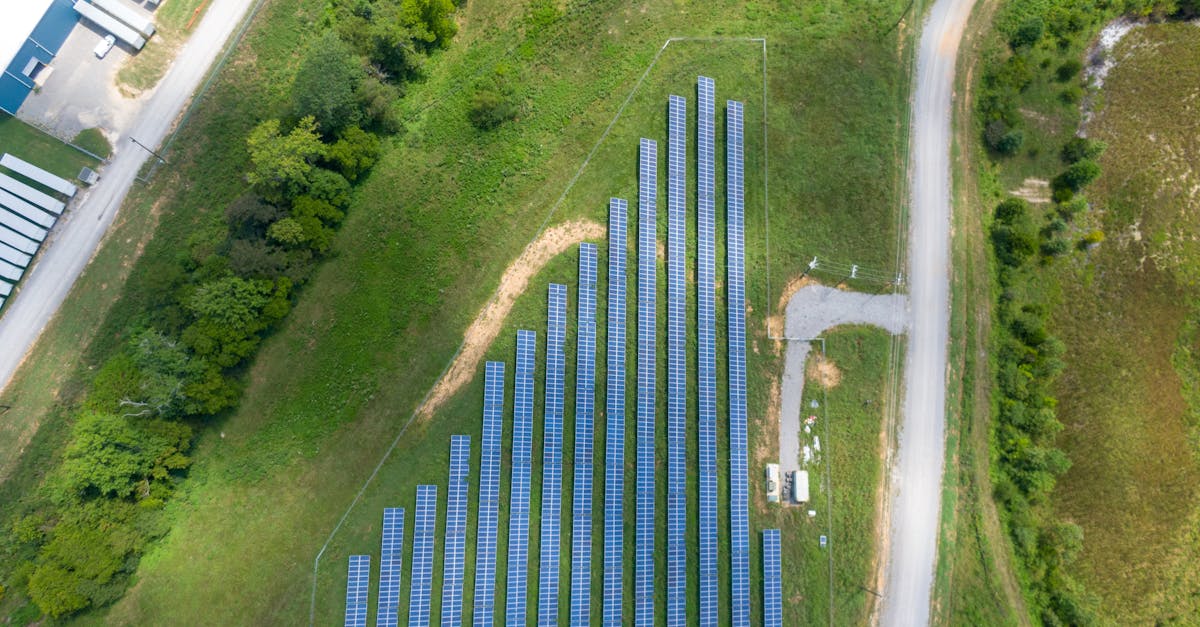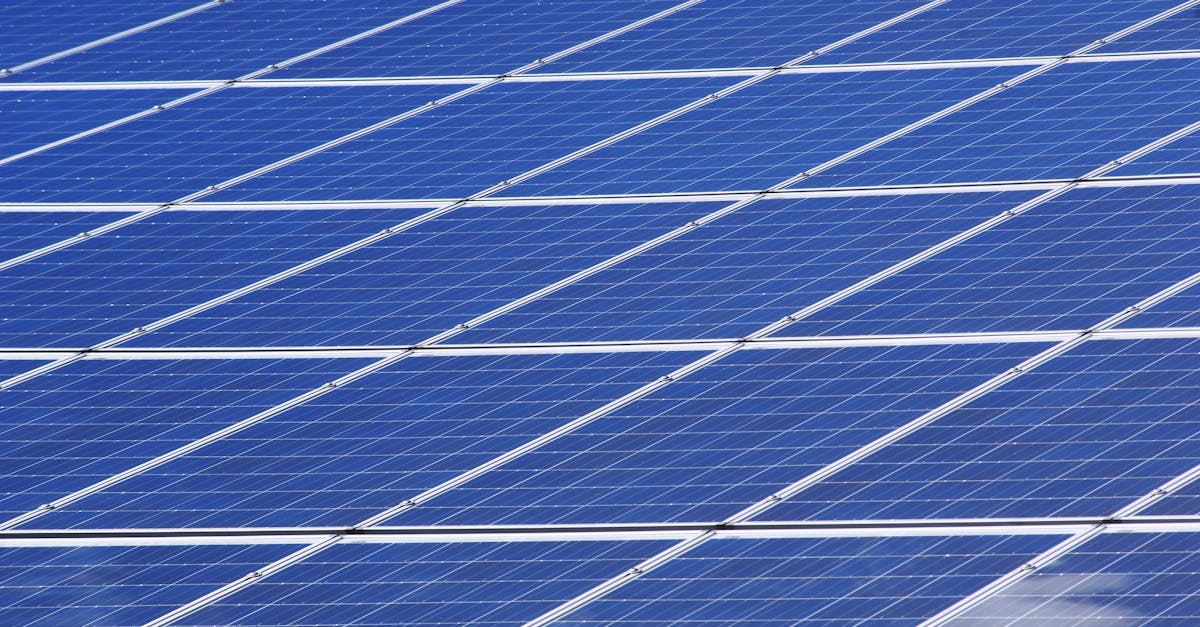Empowering Renewable Energy: The Path to Solar Panel Optimization

Welcome to the ultimate guide to enhancing your solar panel efficiency and maximizing renewable energy output! In this article, we’ll delve into expert tips and cutting-edge techniques to help you make the most of your solar energy investment. Whether you’re a homeowner, a business owner, or an advocate for sustainable living, learning how to optimize solar panel performance is key to reducing your carbon footprint and saving on energy costs. From understanding the latest photovoltaic innovations to exploring maintenance best practices and efficiency-boosting technologies, we’ve got you covered. Additionally, we’ll uncover financial incentives, rebates, and the remarkable environmental impact of maximizing solar panel efficiency. By the end of this guide, you’ll feel empowered to harness the full potential of solar energy while contributing to a greener, more sustainable future.
1. Understanding Solar Panel Efficiency
Thank you for reading this post, don't forget to subscribe!
Photovoltaic Technology
Photovoltaic technology continues to drive remarkable advancements in solar energy, revolutionizing the efficiency and effectiveness of solar panels. The latest innovations in photovoltaic systems are shaping a brighter, more sustainable future. With improvements in materials and design, modern photovoltaic cells are achieving higher conversion efficiencies, capturing more sunlight and generating increased electrical output. These advancements mean that solar panels can now produce more energy than ever before, making renewable energy a more viable and powerful option for consumers and businesses. Moreover, the impact of these innovations is not limited to energy output alone. These cutting-edge developments contribute to the accessibility and affordability of solar power, making it an increasingly attractive choice for those seeking environmentally friendly and cost-effective energy solutions.
Panel Orientation and Placement
When it comes to maximizing the efficiency of solar panels, the positioning and orientation of these panels play a crucial role in ensuring optimal energy yield. By strategically placing solar panels to capture the maximum amount of sunlight throughout the day, individuals and businesses can significantly enhance their energy production. To achieve this, it’s essential to consider factors such as the angle of tilt and the direction the panels face. By aligning panels to face the sun’s path, typically towards the south in the northern hemisphere, energy capture is optimized. Additionally, adjusting the tilt of the panels seasonally allows for greater energy absorption during different times of the year, ensuring consistent and efficient energy generation. This strategic approach leads to increased energy output, making solar power an even more attractive and reliable renewable energy source.
2. Maintenance and Cleaning Techniques

Regular maintenance is essential to ensure that solar panels operate at their peak performance, providing a consistent and reliable source of renewable energy. By incorporating vital maintenance practices, individuals and businesses can extend the lifespan of their solar panels and optimize their energy output. Routine inspections play a key role in identifying any issues that may affect a panel’s efficiency, allowing for timely repairs and upkeep. Additionally, keeping solar panels clean is crucial for maximizing their energy generation potential. Regular cleaning helps prevent dust, dirt, and other residues from obstructing sunlight absorption, ensuring that panels operate at their highest capacity. Embracing these maintenance practices not only safeguards your investment but also contributes to a sustainable and eco-friendly energy solution.
Regular Inspection and Cleaning
Regular inspection and cleaning are pivotal in maintaining the efficiency and longevity of solar panels while maximizing their energy output. Scheduled inspections help identify and address potential issues that may arise, ensuring that panels continue to function at their peak capacity. By conducting routine checks, individuals and maintenance professionals can detect any issues early, preventing minor problems from escalating and impacting energy production. Additionally, routine cleaning is essential to remove accumulated dust, dirt, and debris that could hinder sunlight absorption. Keeping panels clean ensures that they operate optimally, allowing for maximum energy generation. Embracing these practices not only extends the lifespan of solar panels but also contributes to sustainable energy production and environmental conservation.
Dealing with Shading and Debris
Managing shading and debris accumulation is crucial in maintaining consistent energy production from solar panels, ensuring that they operate at their maximum potential. Shading, whether from nearby structures, trees, or other environmental factors, can significantly reduce a panel’s energy output. By addressing shading through strategic panel placement and potentially trimming obstructive vegetation, individuals and businesses can minimize its impact, allowing for optimal energy capture. Additionally, managing debris accumulation, such as leaves, bird droppings, or dirt, is essential for preventing any interference with sunlight absorption. Regularly clearing debris from panels helps maintain their efficiency, supporting the continuous and reliable generation of solar energy. With these effective methods, individuals can ensure that their solar panels consistently deliver sustainable energy, contributing to both environmental preservation and long-term energy savings.
3. Efficiency-Boosting Technologies
Solar Panel Optimizers
Solar panel optimizers play a crucial role in elevating solar panel efficiency and overall performance, offering an insightful approach to maximizing energy yield. These devices are designed to enhance each panel’s output by individually optimizing their performance. This means that even if one panel is partially shaded or experiencing lowered performance, the other panels can continue to operate at their maximum potential, mitigating any efficiency loss. By incorporating panel optimizers, solar energy systems can overcome shading and other limitations, ensuring consistent and efficient energy production. Additionally, these optimizers provide real-time monitoring and data analysis, allowing for precise insight into the performance of each panel. This level of monitoring not only ensures optimal energy production but also facilitates proactive maintenance and troubleshooting, ultimately bolstering the reliability of the entire solar energy system.
Energy Storage Solutions
Energy storage solutions are revolutionizing the landscape of renewable energy utilization, offering a host of benefits that transform the way we harness and consume sustainable power. These systems enable the capture and storage of excess energy, ensuring that it can be utilized during times of high demand or when sunlight is not readily available. By integrating energy storage solutions, solar energy becomes a more reliable and consistent power source, effectively reducing reliance on traditional grid systems and enhancing energy independence. Furthermore, these systems effectively manage power fluctuations, providing a stable and continuous energy supply for both residential and commercial applications. The ability to store energy also means that homeowners and businesses can capitalize on periods of peak solar generation, maximizing the value they derive from their solar panels and promoting further energy cost savings.
4. Financial Incentives and Rebates

Exploring financial incentives and rebates opens the door to an array of opportunities to support and enhance your solar panel investment while increasing affordability. Government programs and tax credits are readily available to reduce the cost of installing and upgrading solar panels, making renewable energy more accessible and appealing. These initiatives aim to incentivize the adoption of solar energy, contributing to a more sustainable and environmentally conscious society. Furthermore, by leveraging net metering and feed-in tariffs, solar panel owners can substantially benefit from their excess energy production. Net metering allows for the accumulation of credits when a solar system produces more energy than is consumed, effectively spinning the electricity meter backward and resulting in cost savings on utility bills. Feed-in tariffs provide a monetary return for the surplus energy generated, further incentivizing investment in solar power and promoting a seamless transition to sustainable energy sources.
Government Programs and Tax Credits
Current government programs and tax credits play a pivotal role in driving the adoption of solar energy by reducing the costs associated with installing and upgrading solar panels. These incentives are designed to make renewable energy more accessible and affordable for homeowners and businesses, ultimately contributing to a greener and more sustainable future. Government programs often provide financial assistance or low-interest loans to support the installation of solar panels, encouraging individuals to embrace clean energy solutions. Additionally, tax credits offer direct financial benefits to offset a portion of the upfront costs of installing solar energy systems, making it a more appealing investment for many. By taking advantage of these programs and credits, individuals can not only lower their environmental impact but also benefit from significant cost savings, making the transition to solar energy an economically advantageous choice.
Net Metering and Feed-in Tariffs
Net metering and feed-in tariffs offer substantial financial benefits for solar panel owners, allowing them to leverage excess energy production and contribute to a more sustainable energy infrastructure. Net metering enables solar panel owners to feed surplus energy back into the grid, effectively spinning their electricity meter backward and accumulating credits for the excess electricity they generate. These credits can then be used to offset the cost of electricity drawn from the grid when solar energy production is insufficient, resulting in lower overall utility bills and substantial cost savings. Similarly, feed-in tariffs provide direct monetary compensation for the surplus energy produced by solar panels, offering a means for individuals to earn from their renewable energy investment. By comprehensively understanding and leveraging these mechanisms, solar panel owners can not only capitalize on their excess energy but also play a vital role in bolstering the overall sustainability of the energy grid.
5. Environmental Impact and Sustainability
Maximizing solar panel efficiency not only leads to significant energy gains but also offers remarkable environmental benefits, contributing to a more sustainable and eco-friendly future. By optimizing solar panel performance, individuals and organizations can significantly reduce their carbon footprint, mitigating the harmful effects of traditional energy production. Solar energy plays a pivotal role in combatting climate change by reducing greenhouse gas emissions, offering a clean and renewable alternative to fossil fuels. Additionally, enhancing solar panel efficiency promotes resource conservation, as it reduces the need for non-renewable energy sources, thus helping to preserve natural resources for future generations. Embracing solar energy fosters energy independence, providing communities and nations with the means to generate their own sustainable power, lessening reliance on external energy supplies and enhancing overall resilience.
Carbon Emission Reduction
Solar panel efficiency plays a vital role in addressing climate change by significantly reducing carbon emissions. As solar panels become more efficient, they contribute to a substantial decrease in greenhouse gas emissions, effectively combating climate change. The more energy we can derive from renewable sources like solar power, the less we rely on fossil fuels, which are a major contributor to carbon emissions. By embracing solar energy and maximizing its efficiency, individuals and communities can actively participate in reducing their carbon footprint, making a positive impact on the environment. The widespread adoption of solar energy not only aids in reducing air pollution but also helps in preserving ecosystems and promoting a cleaner, healthier planet for future generations.
Resource Conservation and Energy Independence
Solar energy plays a pivotal role in conserving natural resources and promoting energy independence at both local and global levels. By harnessing the power of the sun, solar energy reduces the reliance on finite resources such as coal, oil, and natural gas, thus helping to preserve these valuable resources for future generations. As we embrace solar energy and maximize its efficiency, we contribute to a more sustainable and balanced use of Earth’s resources. Moreover, on a global scale, the adoption of solar energy fosters energy independence, empowering communities and nations to generate their own sustainable power. This reduces dependence on external energy sources, enhancing local and national resilience and stability.
- What are some benefits of solar panel optimizers?
- a) They improve the taste of water
- b) They individually optimize panel output, mitigating efficiency loss
- c) They help in cooking food faster
- d) They are used to play music
- How does net metering benefit solar panel owners?
- a) It increases their electricity bills
- b) It accumulates credits for surplus energy
- c) It decreases the efficiency of solar panels
- d) It makes solar panels less reliable
- What is the primary goal of maximizing solar panel efficiency?
- a) To reduce access to renewable energy
- b) To increase reliance on fossil fuels
- c) To significantly reduce carbon emissions
- d) To deplete natural resources faster
- b) They individually optimize panel output, mitigating efficiency loss
- b) It accumulates credits for surplus energy
- c) To significantly reduce carbon emissions




